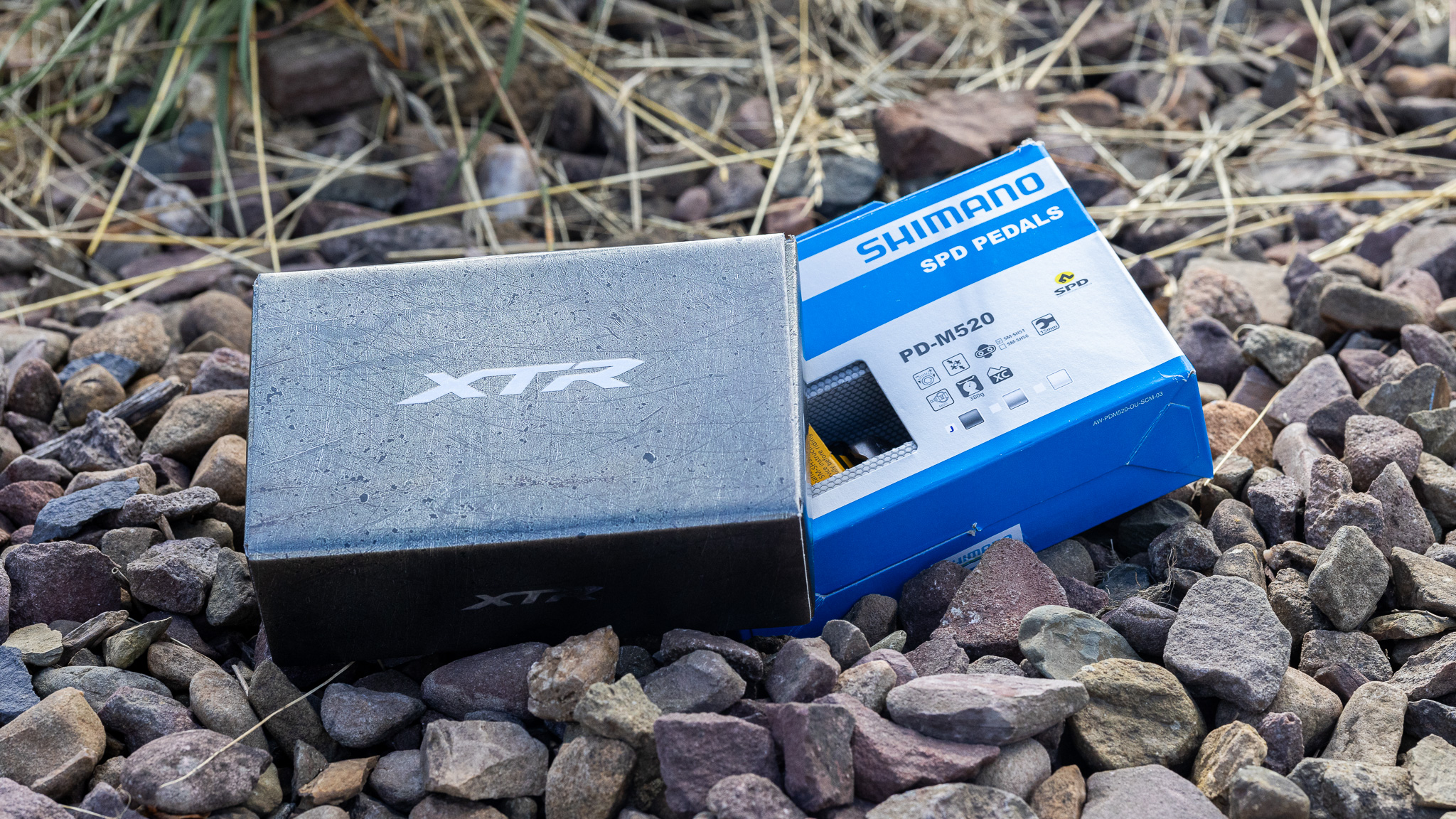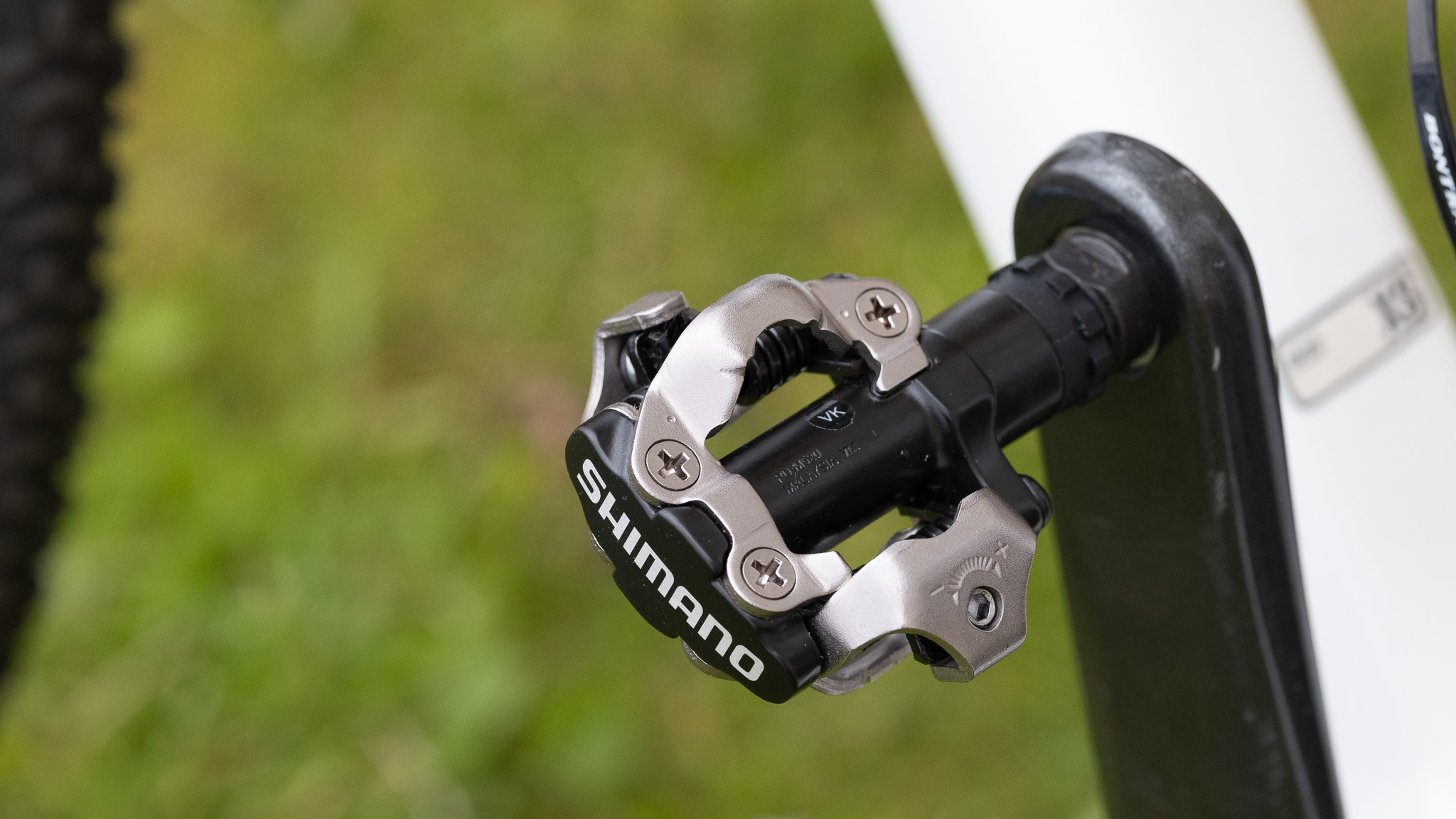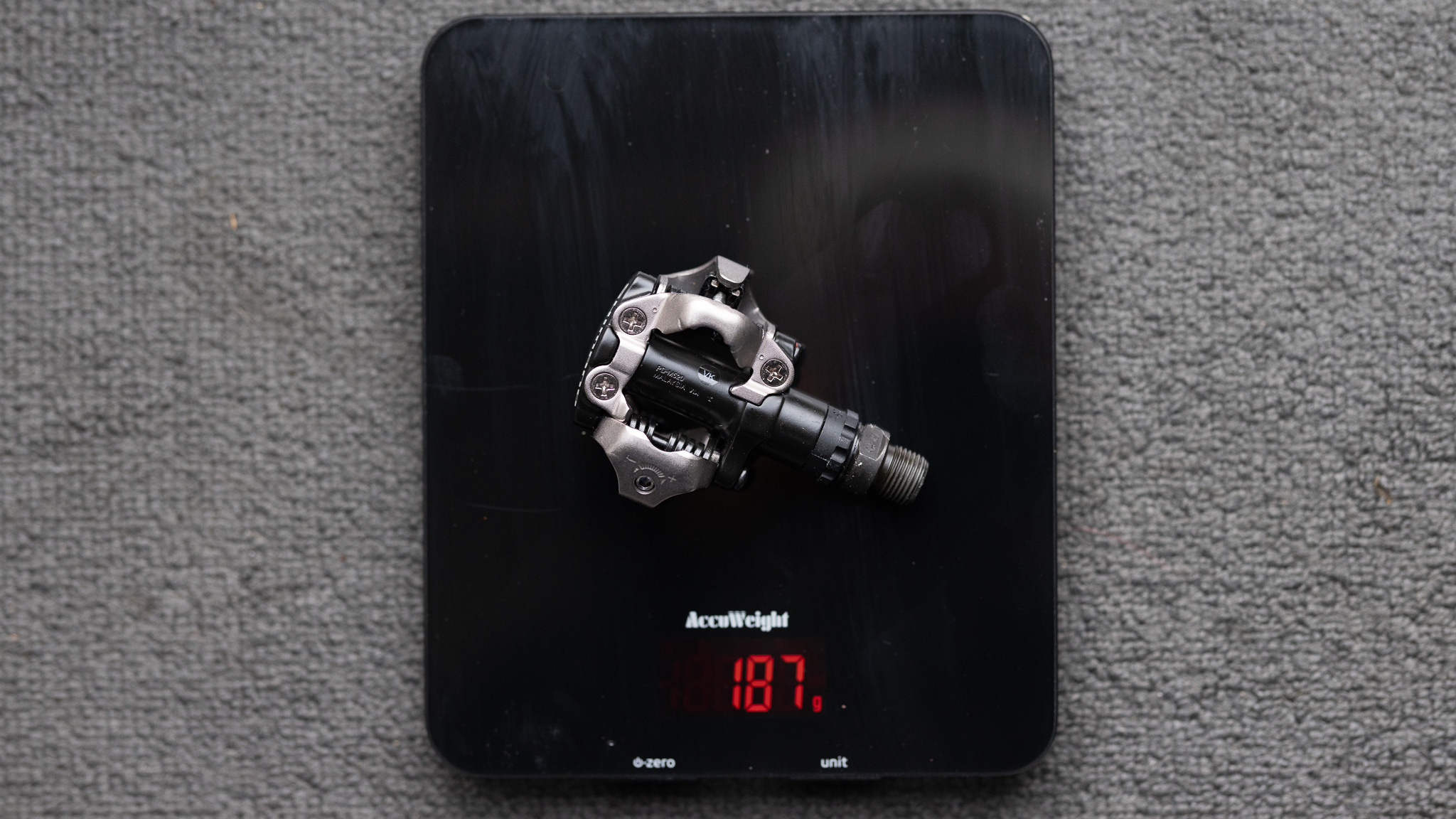Shimano XTR SPD pedal vs its M520 bargain sibling – just how close are they and does the 2024 Olympic winning model justify the huge price difference?
Can a pedal three times cheaper hold its own against the Olympic and World Championship XC winning model

Shimano SPD pedals have been around forever and various models always feature in our best SPD pedal guide. The top-of-the-range Shimano XTR pedal was part of Tom Pidcock's XC gold-winning setup and they also appeared in my hottest Olympic XCO MTB kit feature.
Having used the budget Shimano M520 pedal regularly I wanted to know how much they differed from the race-ready XTR pedals, so I decided to do a direct comparison to find out.
Before I get into the details the obvious difference is the cost. The top-of-the-range Shimano XTR PD-M9100 pedals (to give them their official title) come priced accordingly at $150 / £129 / €164. The wallet-friendly Shimano PD-M520 pedal is priced at $50 / £45 / €55.
These are the RRP prices but by hunting around on Amazon you can occasionally find better deals on both.

1. Build quality and look
On first look both the pedals have a similar appearance, with the familiar double-sided clip-in mechanism, fixed cleat housing plate and spring-tensioned binding plates looking almost identical. The obvious difference is the color of the springs – the XTR gets nice shiny silver springs instead of the black ones on the budget model. The plates are also similar, with the XTR having a slightly duller finish. The hex key tension adjuster is also the same on both. Both pedals have a forged aluminum body, chromoly spindles and sealed bearings.
This is where the similarity ends though, as the XTR's build quality and overall better looks come into their own. Its wider, sleeker appearance gives it a very classy look. It measures 98.6mm in width compared to the 91.7mm of the M520. This is mostly due to the wider shoe contact areas designed for more stability. They are also rounded and polished to deliver better mud clearance.
The budget model has smaller shoe contact areas and a slightly rounded axle but it's far more chunky. The XTR has a slimmer axle and bigger mud-shedding holes between the axle and mechanism. The M520 uses a plastic lock ring rather than the slick polished metal version on the XTR but both use run-on cup and cone bearings, which make both easy to clean and re-grease.
Branding on Shimano's top-of-the-range pedal is subtle, with just the XTR logo on the axle being the main visual clue to it being the brand's premium model. The big Shimano lettering that's on the M520 which for other groupset owners could be slightly annoying but is aesthetic you don't miss.
Build quality and look winner
The XTR takes this easily – although both pedals have a similar appearance you can't escape the quality feel, look and build of the XTR.


2. Weight
You'd be right to assume the XTR pedals are the lightest of the two sets on test and they have a noticeably slimmer appearance and a lower stack height of 15.1mm with the M520 being 17.6mm. The XTR weighs in at 156g with the M520 tipping the scales at 187g. This weight is for a single pedal unused and fresh out of the box. It's not a massive difference, just 31g or 62g for a pair, which means you're paying around $1.60 or £1.35 for every gram saved. So if you're not an XC racer and weight isn't your main concern then the M520 is a cost-effective option.
Weight winner
The XTR gets the nod on weight but it's close with the slimmer profile and build quality shedding the weight on the XTR. The M520 for those not fussed about the weight is the obvious way to go.


3. Durability
I've ridden various models in the Shimano SPD pedal range for years – firstly on mountain bikes, more recently while riding on the best gravel bikes and for my occasional dabble into cyclocross racing too. Across the range they are, in my opinion, almost indestructible and they keep spinning easily and continue to deliver the familiar clunk when clipping in and out, standing up to years of all-weather abuse, rock strikes, and crashes.
This is the beauty of the budget pedals – they will take an absolute hammering, perform brilliantly, and are easily serviceable. However, should you manage to damage them beyond repair (good job), buying another pair, at this price, doesn't hit your wallet. It may be frowned upon by Greta Thunberg, but Shimano has a sustainability and recycling policy that claims all its packaging for all its products is eco-friendly, but no mention of recycling the actual plastic and metals in the pedals.
The XTR version performs equally well and will take a beating just as happily. However, at three times the cost you won't be so keen to replace them so quickly. They also look so nice that I want them to retain their looks for as long as possible. One minor moan is that the cleat quickly started to wear through the highly polished contact patch on the XTR, which didn't affect the performance but for the price was slightly irritating. Additionally the supplied cleats on both, which are identical last well too.
Durability winner
The M520 gets this one, purely down to cost vs durability. The XTR soaks up everything you can throw at it equally well but the budget version makes the most sense for everyday riders.


4. Performance
I fitted one pedal of each model to the same bike for a direct ride comparison, adjusted both pedals to the same tension and rode in the Specialized S-Works Recon Laced shoe. The familiar Shimano clip and release action are similar on both, but the XTR is noticeably quieter and smoother, with a more definitive click that gives a more secure and locked-in feel.
The stability on both felt remarkably similar, and the difference in stack height or width had no noticeable effect. I did notice that the rounded shoe contact patch on the XTR, designed to let mud escape, coped better with the muddy conditions I rode in.
In a full winter cyclocross race, I'd want the mud-clearing abilities of the XTR on my side. The XTR with its lighter weight would come into play in a race situation too and could make all the difference.
I can't really fault the M520s for performance though, they do everything perfectly well and you can't get away from the price, they’re a dependable performer that just keeps spinning and clipping in and out with ease.
Performance winner
It's a draw – for me, both pedals offer superb performance for their respective cost.

5. Overall
The good news is both pedals are excellent and make it into our best SPD pedals guide, ticking the boxes for performance and durability with ease. Nobody will ever be disappointed riding on either of these Shimano pedals or any of the other models in the range.
For this head-to-head test, it has to go to the Shimano XTR pedal even though it's very close – closer than I expected considering the difference in the price.
Overall winner
XTR still has what it takes to deliver everything you'd want in an SPD pedal.

Paul Brett joined BikePerfect as a staff writer in 2022. He has been an avid cyclist for as long as he can remember, initially catching the mountain biking bug in the 1990s, and he raced mountain bikes for over a decade before injury cut short a glittering career. An award-winning photographer, when not riding a bike, he can be found at the side of a cyclocross track or a downhill mountain bike world championship shooting the action. Paul was the founder, editor and writer of Proper Cycling magazine, and he's traveled the world interviewing some of the biggest names in mountain biking and writing about some of the biggest cycling brands.
Current rides: Canyon Inflite, Specialized Diverge, Marin Alpine Trail 2
